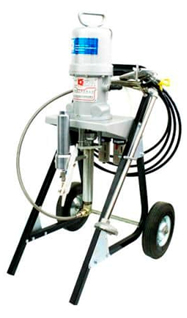Corrosion Treatment
Ambiseven, through its technical staff, with Experiments and Level 1 and 2 - ABRACO - (Brazilian Corrosion Association), always chooses the best surface treatment to be used for each scenario and considering all possible factors for That the protection against corrosion be gilded and meeting all current standards.
• OXYGEN - Factor practically fixed, as few vary from place to place.
• Relative air humidity - It varies from place to place, macro and micro climate, geography and topography of the region and the presence of forests in the region.
• Temperature - Influences corrosivity because there is less possibility of condensation of air humidity at high temperatures.
• Aggressive Atmospheres - are those that contain saline pollutants and mists. The pollutants are defined as vapors, gases and non-natural dusts. The most important aggressive agents in each environment are:

The definition of the surface treatment system will have major influences on the definitions of metallic structural design, such as the type of steel to be used, type of steel to be employed, type of profile and thickness of the steel plate, dimensions of the pieces , Reinforcing splints and bolted joints. There are many ways to protect steel, but in general they come in two categories:
Organic coatings - PAINTINGS;
Metallic coatings - GALVANIZATION;
For these applications we use the best technology, searching for the best in the market and applying in our operations, for each scenario we use a process and the most used is airless painting.
It is used with a sprayer or spray gun and uses totally atomized equipment that does not require the use of compressed air. The high pressure of airless paint equipment ranges from 500 to 3,000 psi and causes the paint or mass to be sprayed under high conditions and speed.
When passing through the spray nozzle, the high pressure causes the particles of the paint or mass to break, increasing its area of expansion when sprayed on the surface. The cloud generated by the better distribution of the ink or mass is greatly reduced and, because of this, the waste of raw material is also lower, around 25% to 30% per application.
Airless paint has other advantages:
Organization: airless paint creates less inconvenience when applying and prevents paint splash or dough;
Yield : It is possible to apply thicker layers in a single coat, which guarantees greater work efficiency. The surface is homogeneous and without blemishes;
Handling : the handling of the equipment is easy and even people without experience can quickly learn to work quickly with the device;
Speed : Two people can perfectly manipulate the airless paint equipment and replace the work of ten professionals who use the paint method with roller or brush in the same period of time. While one professional commands the pistol, the other is in charge of feeding and moving the machine. It is possible to paint an environment of 200m² in one hour.




